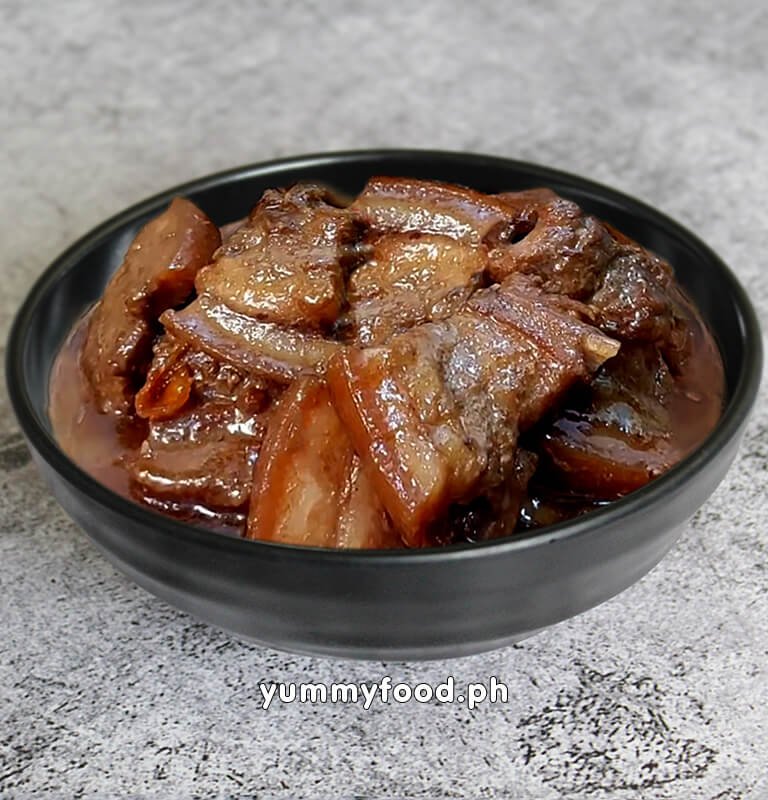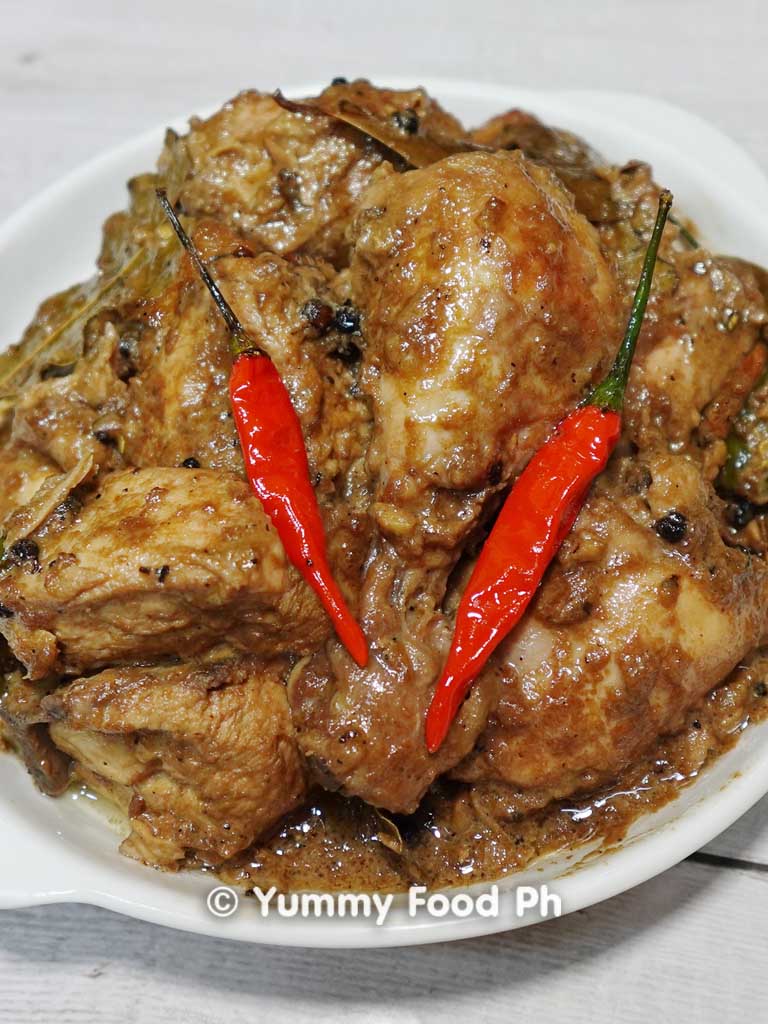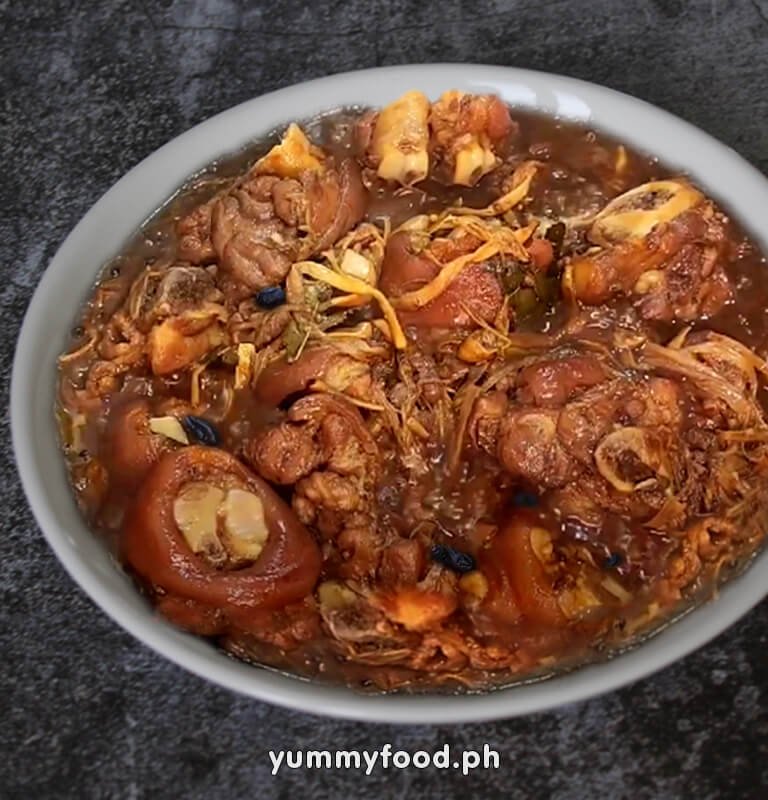Creamy Pork Adobo Recipe sa Gata: A Rich Twist on the Filipino Classic
Pork Adobo Recipe sa Gata reinvents the beloved Filipino adobo by infusing it with creamy coconut milk, creating a luscious, velvety sauce that perfectly balances the dish’s signature tangy-savory flavor. This version is extra indulgent yet easy to make—ideal for those who want to take their adobo game to the next level!
Why You’ll Love This Adobo Twist
🥥 Rich & Creamy – Coconut milk adds a luxurious, slightly sweet depth.
🍖 Fall-Off-The-Bone Tender – Pork simmers until melt-in-your-mouth soft.
🌶 Customizable Heat – Add chili peppers for a spicy kick.
🍚 Perfect with Rice – The creamy sauce is ulam heaven!
Key Ingredients
- Pork belly or shoulder – Cut into chunks (fat = flavor!).
- Coconut milk (gata) – Use full-fat for maximum creaminess.
- Soy sauce & vinegar – The classic adobo base.
- Garlic, peppercorns, bay leaves – Essential aromatics.
- Optional: Pineapple chunks – For a sweet-tangy twist.
Step-by-Step Cooking
1️⃣ Sear Pork – Brown in oil for extra flavor. Set aside.
2️⃣ Sauté Aromatics – Garlic, onions, and bay leaves until fragrant.
3️⃣ Simmer in Sauce – Return pork, add soy sauce, vinegar, and water. Cook until tender (~40 mins).
4️⃣ Add Gata – Pour in coconut milk and simmer gently (don’t boil hard!).
5️⃣ Reduce & Serve – Thicken slightly for a glossy finish.
Serving Suggestions
🌿 Garnish with chili leaves or spring onions – For freshness.
🍋 Serve with calamansi or pickled veggies – To cut through richness.
🍻 Perfect pulutan – Pair with ice-cold beer!
Pro Tips
✨ Use kakang gata (coconut cream) for an extra-rich version.
🔥 Let it sit overnight – Flavors deepen beautifully.
🥥 Toast grated coconut before squeezing for gata for a nuttier taste.
This Pork Adobo sa Gata is comfort food upgraded—creamy, savory, and unforgettable!
Love adobo variations? Try our Adobong Pusit (Squid Adobo) or Pork Chop Asado next! 🐷🥥
Share and enjoy the food! 😋
Visit us on YouTube: Yummy Food PH

Pork Adobo Recipe sa Gata – Adobong Baboy sa Gata
Description
Pork adobo recipe in coconut milk, also known as pork adobo recipe sa gata, is a variation of the famous Filipino adobo recipe where the dish is added with coconut milk. The added ingredient adds richness and intrigue to the standard adobong baboy.
Ingredients
Instructions
Preparation:
Prepare the pork belly, slice them into cubes and put them into a mixing bowl.
Peel, chop, slice and minced the spices needed.
In a bowl with pork, add soy sauce, vinegar, oyster sauce, peppercorn and half of the crushed garlic. Mix well. Marinate the pork for at least 1 hour, overnight is better. Don’t forget to put it in the fridge.
Before cooking it separate the pork from the marinade sauce. The pork is ready to pan fry.
Cooking:
In a pan or wok, heat vegetable 2 tbsp. of cooking oil over a medium-low flame. Add the marinated pork and pan fried both sides until turns brown and the fats from the meat renders.
If use the same pan just leave 2 tbsp. of oil for sauteing. Saute of the remaining garlic until aromatic then add the onion saute it until soft.
Add the pan fried pork, saute them with the spices. Pour in the marinade sauce and stir. Add water, and dried bay leaves. Cover lid and bring to boil.
Once it’s start boiling add the sugar stir and adjust the heat to low. Simmer until the meat is fork tender and the sauce reduce to 1/3.
Once the meat is tender enough add the fresh coconut milk. Stir and simmer for another 8 to 10 minutes.
Note: You have to 2 options in your adobo sa gata. Saucy adobo and dry adobo. Taste it adjust accordingly before serving. Add extra salt to taste as needed.Transfer to a serving bowl and Serve.
Happy cooking share and enjoy the food.
Nutrition Facts
Servings 6
- Amount Per Serving
- Calories 1462kcal
- % Daily Value *
- Total Fat 148.9g230%
- Saturated Fat 63.3g317%
- Cholesterol 167mg56%
- Sodium 752mg32%
- Potassium 253mg8%
- Total Carbohydrate 6.4g3%
- Dietary Fiber 1.9g8%
- Sugars 2.9g
- Protein 24.8g50%
- Calcium 2 mg
- Iron 17 mg
* Percent Daily Values are based on a 2,000 calorie diet. Your daily value may be higher or lower depending on your calorie needs.






